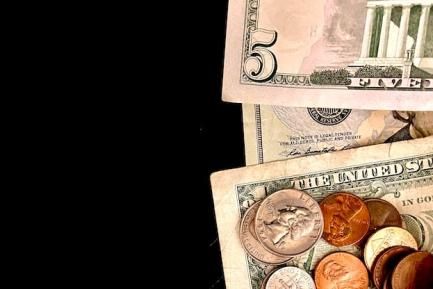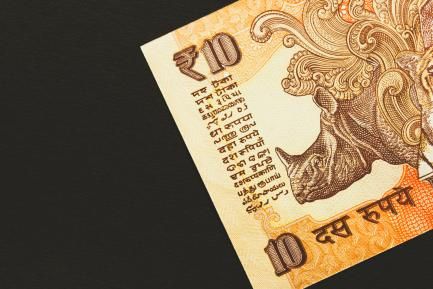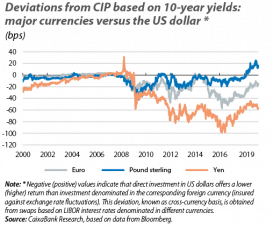On the round trip movement of the (king) dollar
Between the end of September and the end of February, the US dollar depreciated by 6% in effective nominal terms and by 10% against the euro, trading at close to 1.07, a level not seen for almost a year. We explore what lies behind this change of trend and whether it is likely to continue.

In a year of widespread losses in the financial markets, if there is any asset that stood out for its positive performance during much of 2022, it was the US dollar. Its appreciation, in effective nominal terms, amounted to 16% in the first nine months of the year, marking the biggest advance since 2015 when the Federal Reserve ceased net bond purchases following the stormy taper tantrum episode.
The strength of the dollar last year was particularly pronounced against the euro. It closed below parity with the European single currency in 46 sessions of the year, reaching a low of 0.959 at the end of September, the lowest level since the euro’s introduction two decades ago.
However, more than this appreciation, perhaps what has surprised analysts the most is how quickly it has reversed. Between the end of September and the end of February, the dollar depreciated by 6% in effective nominal terms and by 10% against the euro, trading at close to 1.07, a level not seen for almost a year.
Given how sharp this movement has been, in this Focus we explore what lay behind the change in trend and to what extent it could continue.

To answer these questions, we begin by analysing the factors behind the appreciation of the dollar up until October 2022.
Firstly, we highlight the demand for the dollar as a safe-haven asset. In a year overshadowed by the final throes of the pandemic, and above all by Russia’s invasion of Ukraine, it is no surprise that investors, as is typical during episodes of uncertainty and volatility, opted to hedge some of the risk by increasing their «long» positions in the US currency (i.e. buying assets denominated in dollars). This factor is particularly relevant in the current context of inflationary tensions, disruptions in the commodity markets and, in particular, uncertainty regarding the energy supply.
On this latter point, the terms of external trade improved in the US, which is a net exporter of energy, compared to other major economic blocs, especially the EU. In fact, according to data from the balance of payments, the euro area closed 2022 with a negative current account balance (–0.8% of GDP versus +2.3% in 2021), making it the first year with an external deficit since 2011, at the height of the sovereign debt crisis. These factors exerted downward pressure on the euro’s exchange rate with the dollar.
The US Federal Reserve, meanwhile, has been at the forefront of the monetary tightening process among advanced economies, with cumulative official rate rises of 450 bps and with the onset of quantitative tightening even before this summer. This decisive response widened the gap between US interest rates and those of other economic blocs, both in the money markets and in the sovereign debt markets, which favoured capital inflows into this country (see second chart).

Finally, the economic recovery in the US in the post-pandemic period has been faster and stronger than in other developed countries, due to the vast rounds of fiscal stimulus approved in recent years. In the euro area, by contrast, the strong growth in 2022 as a whole reflects, on the one hand, the rebound associated with the reopening process in the first half of the year, but also, on the other hand, the slowdown and virtual stagnation seen in the second half of the year, which was dominated by the energy crisis.
Generally speaking, while still tangibly on the table, many of these factors have lost steam since November. Despite the extension of the war in Ukraine, the energy markets have stabilised, and with it the improvement in the terms of trade in the US has faded. Symmetrically, the terms of trade and the economic outlook for Europe have improved. The Fed, meanwhile, appears to be signalling that the end of monetary tightening is approaching, whereas for the ECB this seems like a somewhat more distant prospect.
Taken together, these factors help us to understand
the unwinding of the dollar’s rally, beginning in the autumn, particularly against the euro, which has recovered almost all of the ground lost since May last year, despite the volatility of recent weeks. Nevertheless, the single currency closed February still trading at historically low levels against the dollar, 6% below the average of the previous five years and 12% below the average of the last two decades. This suggests that, at least a priori, the trend of the last few months may still have some way to go.
Indeed, according to conventional econometric models, the euro/dollar (EUR/USD) exchange rate still lies below most estimates of the so-called «equilibrium» exchange rate. These estimates involve trying to determine the exchange rate of two economies based on their macroeconomic fundamentals, including both those which measure internal imbalances (related to potential growth, its components and its relationship with the business cycle) and those measuring external imbalances (such as the current account deficit or the international investment position), as well as variables which measure the gap in benchmark interest rates.1
According to some estimates, for example, the EUR/USD equilibrium exchange rate could lie at around 1.20, that is, around 10% higher than the rate at the end of February.2 On the other hand, estimates based on the purchasing power parity (PPP) theory result in an exchange rate of between 1.20 (using the Big Mac index) and 1.30 (using the CPI).3
Despite the gap with the current EUR/USD rate, what is clear is that a hypothetical return to these equilibrium levels is unlikely to occur without volatility or periods with new ups and downs, fluctuations that are linked to a set of cyclical, contextual and structural factors. At CaixaBank Research, our baseline scenario projects that the euro is likely to appreciate against the dollar in the coming quarters, albeit very moderately, reaching 1.10 by the end of the year. In the medium term, we project that it could return to a level of around 1.25. The path we anticipate over the next two years is fairly in line with that expected by the consensus of analysts (1.11 in Q4 2023 and 1.14 in Q4 2024, according to Bloomberg).
- 1. The economic literature groups the equilibrium models of the real exchange rate into two main blocks: (i) estimates based on internal and external balances (fundamental equilibrium exchange rates, or FEER) and (ii) estimates based on a set of reduced general equilibrium equations (behavioural equilibrium exchange rates, or BEER). The more traditional approach of purchasing power parity, meanwhile, is based on the notion that, in the long run, a currency should be able to buy the same basket of goods and services in different places.
- 2. See William Cline (2017, 2018). «Estimates of Fundamental Equilibrium Exchange Rates». Peterson Institute for International Economics.
- 3. According to the IMF, the implicit exchange rate according to PPP theory is around 1.30 for the main euro area countries.
Our forecast scenario that the dollar could continue along a path of moderate depreciation in the medium term is based on a view of relative economic stability, with assumptions that (i) a recession in the world economy (both in the euro area and in the US) is avoided, (ii) inflation gradually returns to the 2% target rate, and (iii) central banks are able to bring the cycle of rate hikes to and end in the coming months and to begin bringing rates back down to neutral territory over the next year. Ultimately, this scenario depends on the central banks on both sides of the Atlantic being successful in their fight against inflation. Needless to say, the probability of these assumptions coming to fruition is closely tied to a set of imponderables linked to the impact of pre-existing shocks (e.g. greater persistence in the inflationary pressures or a larger effect of the monetary tightening process), as well as possible new unforeseen events (e.g. geopolitical conflicts, natural or health disasters, as well as other external factors, such as a possible change in the direction of monetary policy in Japan).






